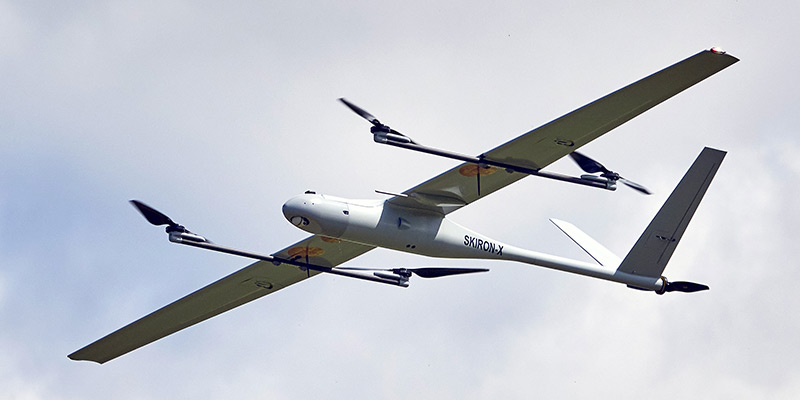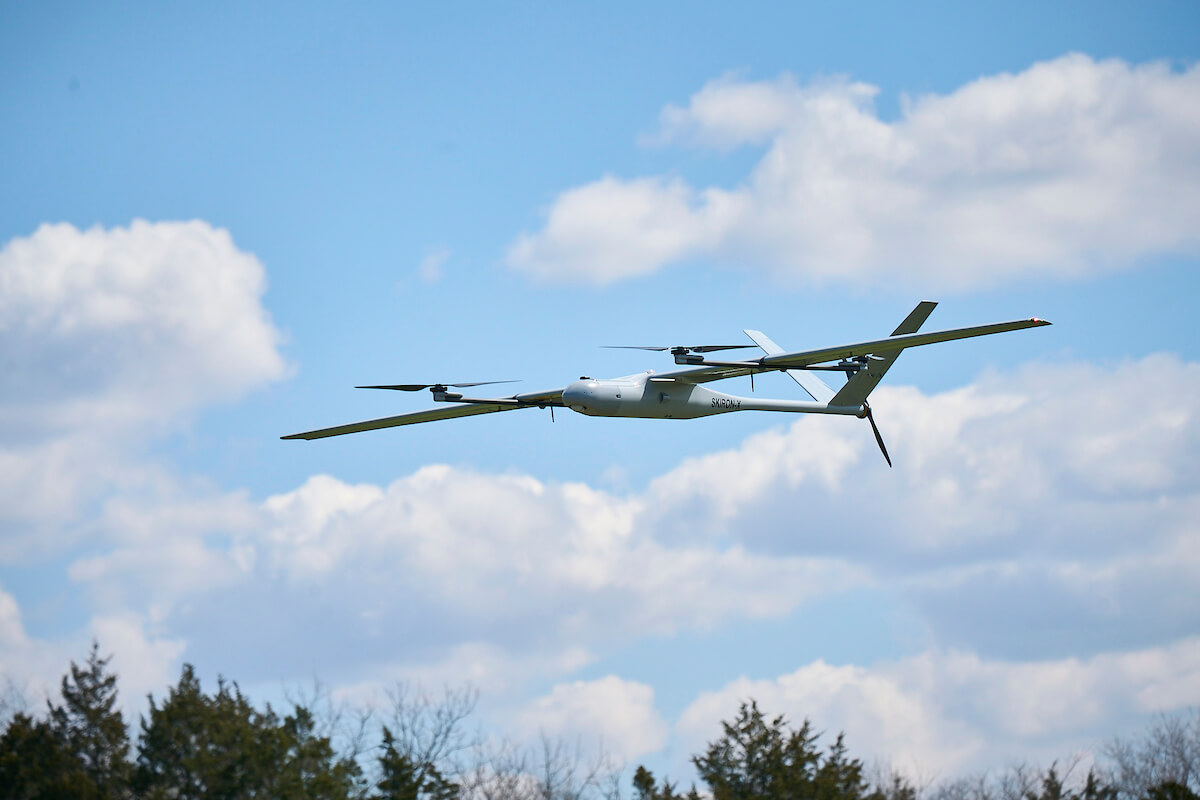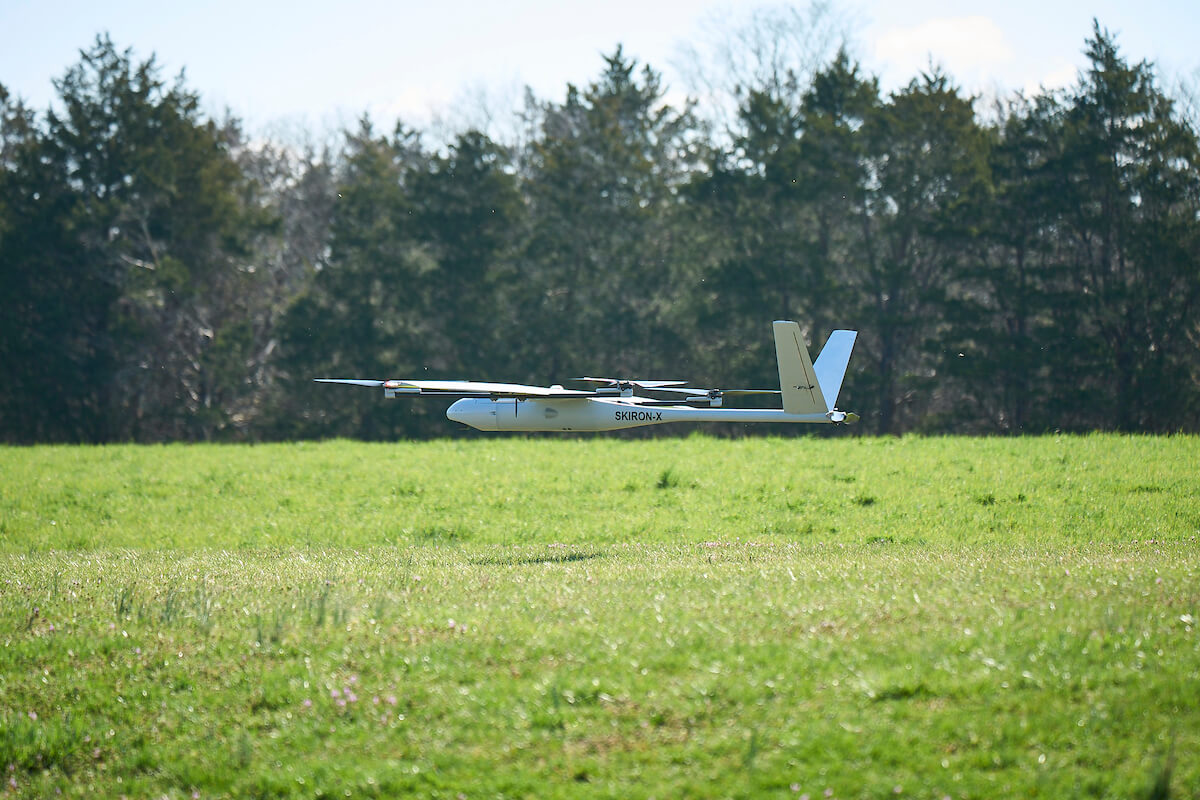Aurora Flight Sciences, a Boeing Company, recently released the second iteration of its SKIRON Expeditionary small UAS (SKIRON-X). The Group 2 unmanned aircraft system combines the convenience of an electric vertical take-off and landing (eVTOL) configuration with the longer endurance of a fixed-wing design. Over the winter, Aurora teams took SKIRON-X into the field to prove-out the results of product upgrades and to test vehicles newly produced in Aurora’s Virginia facility.
The most recent round of product upgrades focused on optimizing battery usage through improvements in the propulsion system, software, and flight standards. While maintaining the same 49 lb. takeoff weight, the max flight endurance was extended to three hours.
“In addition to longer endurance, it handles better in gusty winds and the transitions from vertical to forward flight are smooth and fast. Also, the automatic low speed stall recovery behavior is more benign than any other aircraft I have seen,” said Andrew Heafitz, chief engineer for the sUAS program. “SKIRON-X has a very good airframe architecture and seeing the tuning improvements we made in action this winter was really gratifying.”
Flight endurance and other specifications are based on the vehicle equipped with Trillium’s HD55 EO/IR camera system. However, SKIRON-X offers a highly flexible payload system, which can accept a variety of Trillium cameras or custom payloads. For example, Aurora often uses the Trillium HD25 with a 3D-printed nose cone ballasted to match the weight of the HD55. With SKIRON-X, payload swaps can be completed in the field in less than a minute.
The other features that make SKIRON-X field-friendly are its ability to take-off and land anywhere, its quick-and-easy assembly, and its innovative carrying case.
The SKIRON-X case converts into a convenient assembly stand, which keeps the vehicle secured while the wings and v-tail are easily snapped in place. A single tool attaches the wing assembly to the fuselage and securely closes compartments such as for the battery.
This winter, Aurora conducted flight testing in both Massachusetts and Virginia, testing through cold and even snow.
“Our Massachusetts-based engineering teams love getting out in the field, even when it’s cold. It gives us the opportunity to test our updates quickly and gain additional insight through hands-on experience,” said Heafitz. “We were also able to partner directly with our manufacturing, flight operations, and field service teams based in Virginia.”
SKIRON-X is in production at Aurora’s headquarters in Manassas, Virginia. For more information, visit aurora.aero/skiron-x or stop by booth #2816 at AUVSI Xponential, May 9-11, 2023, in Denver, Colorado.
ABOUT AURORA FLIGHT SCIENCES
Aurora Flight Sciences, a Boeing Company, advances the future of flight by developing and applying innovations across aircraft configurations, autonomous systems, propulsion technologies, and manufacturing processes. With a passionate and agile team, Aurora delivers solutions to its customers’ toughest challenges while meeting high standards of safety and quality. Learn more at www.aurora.aero
# # #
Contact:
Carmen Smith, Aurora Flight Sciences
smith.carmen@aurora.aero






